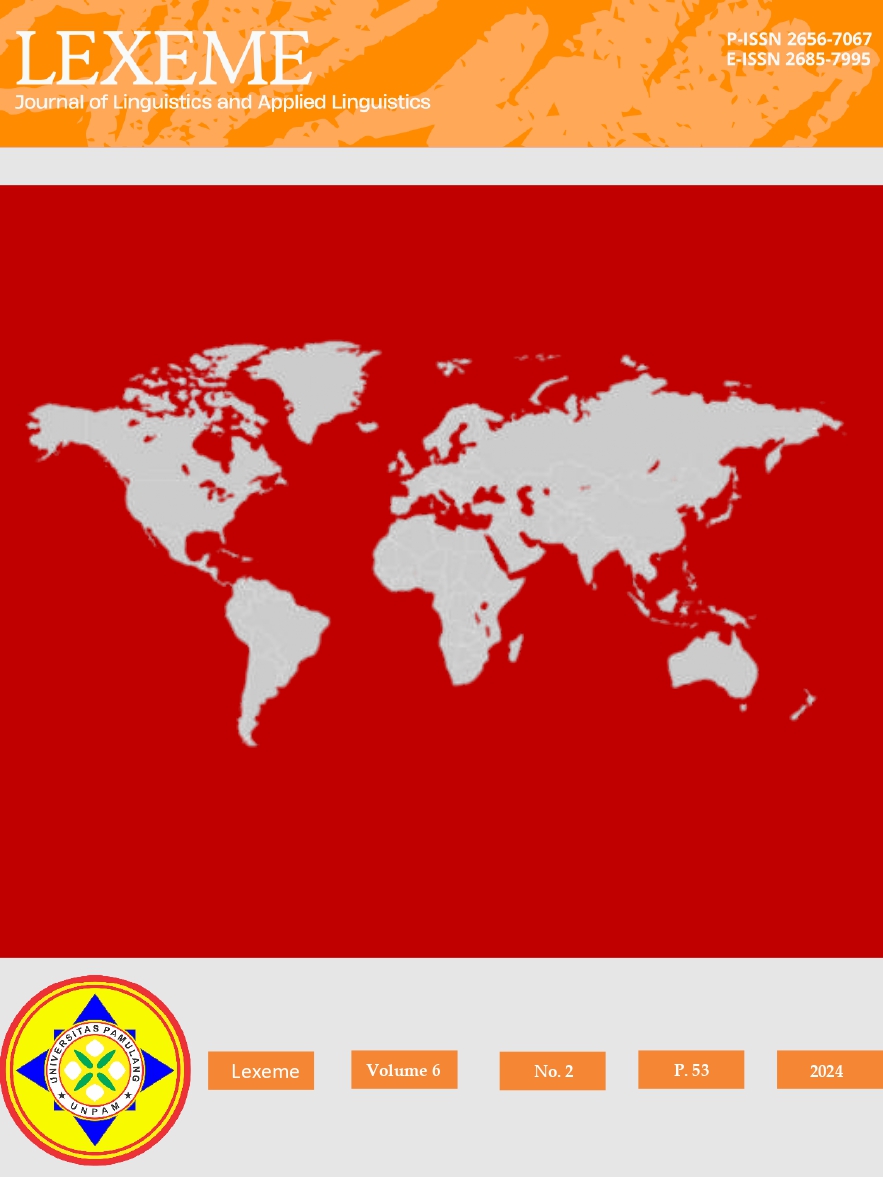An Analysis of the Main Characters’ Identity Formation in the Netflix Series Heartstopper Season 1
DOI:
https://doi.org/10.32493/ljlal.v6i2.41704Keywords:
characterization, fasssinger, identity formation, murphy, seriesAbstract
The issue of homosexuality and LGBTQ+ themes is growing rapidly in literary works and other media. This research aims to describe the main characters and stages in identity formation in the Netflix series Heartstopper season 1. This research adopts descriptive qualitative methods and focuses on dialogue and scenes by Nick Nelson and Charlie Springs as the main characters. Data collection is done by observation and documentation techniques. The selected data will be analyzed by classifying them into each part of characterization and stage of identity formation, then interpreting them in a narrative form. By using M.J. Murphy's theory, researchers found that there are 8 of 9 methods that reveal the personality of the main characters: personal description, speech, character seen by another, past life, reactions, thoughts, mannerisms, and conversation of others, while there is no direct comment is found. By using Fassinger’s theory, researchers found that Nick went through 4 stages of identity formation: awareness, exploration, deepening, and internalization while Charlie had reached the internalization stage since the beginning of the show. The findings shed light on the characterization as an intrinsic element of literary work and the intricacies of adolescent identity formation, particularly in the context of LGBTQ+ experiences.
References
Bench, S. W., Schlegel, R. J., Davis, W. E., & Vess, M. (2015). Thinking About Change in The Self and Others: The Role of Self-Discovery Metaphors and The True Self. Social Cognition, 33(3), 169–185. https://doi.org/10.1521/soco.2015.33.3.2
Britain Explained. (n.d.). What that X means on messages. Britain Explained. Retrieved from https://britainexplained.com/what-that-x-means-on-messages/
Fassinger, R. E. (1998). Lesbian, gay, and bisexual identity and student development theory. Working with Lesbian, Gay, Bisexual, and Transgender College Students: A Handbook for Faculty and Administrators, 13–22.
Franklin-Jeune, S. (2013). Queer theory as a form of Post-Modernism. Graduate Seminar in Anthropological Theory II.
McKee, R. (1997). Story. New York: Harper-Collins Publishers, Inc.
Moleong, L. J. (2010). Metodologi Penelitian Kualitatif. Bandung: PT Remaja Rosdakarya.
Murphy, M. J. (1972). Understanding unseens: An introduction to English poetry and the English novel for overseas students. London: George Allen & Unwin.
Qonita, A. (2023). Hierarchy Of Needs Of The Main Character In Nzingha Stewart’s Tall Girl Movie. Diponegoro University.
Reitsma, R. (2023). Heartstopper and the Query of Queerness: an exploration of how Heartstopper navigates, resists, and diversifies a heteronormative society.
Rotten Tomatoes. (2022). Season 1 - Heartstopper. Rotten Tomatoes. Retrieved from https://www.rottentomatoes.com/tv/heartstopper/s01
Rudy. (2016). The Depiction of Homosexuality in American Movies. Jurnal Humaniora, 28(1), 59–68. https://doi.org/10.22146/jh.v28i1.11502
Sahrani, A., Kuncara, S. D., & Sudirman, E. P. (2022). Queer Representations: Coming Out and Homophobia in Selected Young Adult Novels. Ilmu Budaya Jurnal Bahasa, Sastra, Seni, Dan Budaya, 6, 286–307.
Setiawan, J., & Sudrajat, A. (2018). Pemikiran Postmodernisme Dan Pandangannya Terhadap Ilmu Pengetahuan. Jurnal Filsafat, 28(1), 25–46. https://doi.org/10.22146/jf.33296
Spargo, T. (1999). Foucault and Queer Theory. Cambridge: Icon Books Ltd.
Syahputra, F. P., & Mendrofa, P. I. K. (2022). Figurative Language In John Mayer’s Selected Songs: A Stylistic Analysis. Lingtersa, 3(2). https://talenta.usu.ac.id/lingtersa
Syofyan, D. (2022). Sastra dan Postmodernisme. Retrieved from https://geotimes.id/kolom/sastra-dan-postmodernisme/
Wanggay, D. A., & Sugihartono, R. A. (2023). Characterization of Juno in the Film Kucumbu Tubuh Indahku. ProTVF, 7(2), 148–164. https://doi.org/10.24198/ptvf.v7i2.46538
Downloads
Published
How to Cite
Issue
Section
License
Copyright (c) 2024 Theresia Sinaga, Parlindungan Purba, Fikry Prastya Syahputra

This work is licensed under a Creative Commons Attribution-ShareAlike 4.0 International License.







